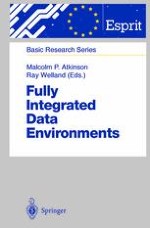Research into Fully Integrated Data Environments (FIDE) has the goal of substantially improving the quality of application systems while reducing the cost of building and maintaining them. Application systems invariably involve the long-term storage of data over months or years. Much unnecessary complexity obstructs the construction of these systems when conventional databases, file systems, operating systems, communication systems, and programming languages are used. This complexity limits the sophistication of the systems that can be built, generates operational and usability problems, and deleteriously impacts both reliability and performance. This book reports on the work of researchers in the Esprit FIDE projects to design and develop a new integrated environment to support the construction and operation of such persistent application systems. It reports on the principles they employed to design it, the prototypes they built to test it, and their experience using it.
